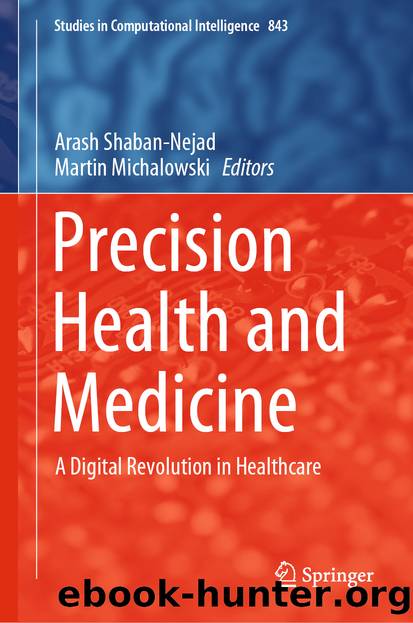Precision Health and Medicine by Unknown

Author:Unknown
Language: eng
Format: epub
ISBN: 9783030244095
Publisher: Springer International Publishing
Score name
RMSE
STER
0.6643
CONV
0.7446
DGES
0.4769
EGES
0.8672
Communication (total)
1.5586
EYE
0.6775
EXPO
0.6239
EMO
0.6241
RESP
0.8250
QSOV
0.5321
QSR
0.4133
ARSC
0.8093
Interaction (total)
2.4002
Total
3.5296
RMSEs are 0.66 (STER), 0.74 (CONV), 0.48 (DGES), 0.87 (EGES), 0.62 (EXPO), 0.62 (EMO), 0.83 (RESP), 0.53 (QSOV), 0.41 (QSR) and 0.81 (ARSC) which scores range from 0 to 2. Regarding EYE, which score is either 0 or 2, its RMSE is 0.68. Our system’s errors are almost around these human experts’ thresholds. Regarding the three total scores, RMSEs are 1.56 [Communication (total)], 2.40 [Interaction (total)] and 3.53 (Total). As these are summations of individual scores, the human expert error is required to be within 2.0, 4.0, and 6.0, respectively. Our system’s errors are all below these human experts’ allowance thresholds for these total scores.
An ADOS test consists of several parts. Clinical psychologists have to observe a couple of points for each part to perform their evaluations. For example, in the “puzzle toy assembly” part at the beginning of the ADOS test, they observe how the eye contact and the vocalization are expressed when subjects request puzzle pieces, as clinical psychologists give puzzle pieces to subjects little by little.
Clinical psychologists are required to evaluate the final ADOS scores by checking throughout all of the ADOS parts. However, our result shows that the ADOS scores can be predicted even from an individual part only.
Correlation Coefficient Between ADOS Scores and Features
We also calculated correlation coefficients between the ADOS scores and the feature values in order to find effectiveness for each feature. Table 5 shows the correlation coefficients between the ADOS scores and the features values, where the top two positive and negative correlations are shown. The first remarkable feature is demonstrative vocabulary. The demonstrative vocabulary or demonstrative vocabulary/s appear among the top two of the four ADOS scores in Table 5. Since a negative correlation strongly appeared, subjects have less ASD severity when they use various types of demonstrative vocabulary such as “this ( )”, “that ( )”, “here ( )”, and “there ( )”. This strong correlation is not for the number of demonstrative occurrences but for the number of demonstrative vocabularies. Therefore, the severity is lower if the subject tells their thinking to the clinical psychologist in an appropriate way, using demonstratives properly but not just frequently.Table 5The result of the correlation coefficient between the ADOS scores and all of the features quantity, “/s” means the appearance number divided by interview time length
Download
This site does not store any files on its server. We only index and link to content provided by other sites. Please contact the content providers to delete copyright contents if any and email us, we'll remove relevant links or contents immediately.
Life 3.0: Being Human in the Age of Artificial Intelligence by Tegmark Max(5507)
The Sports Rules Book by Human Kinetics(4339)
The Age of Surveillance Capitalism by Shoshana Zuboff(4243)
ACT Math For Dummies by Zegarelli Mark(4017)
Unlabel: Selling You Without Selling Out by Marc Ecko(3623)
Blood, Sweat, and Pixels by Jason Schreier(3583)
Hidden Persuasion: 33 psychological influence techniques in advertising by Marc Andrews & Matthijs van Leeuwen & Rick van Baaren(3515)
Bad Pharma by Ben Goldacre(3395)
The Pixar Touch by David A. Price(3389)
Urban Outlaw by Magnus Walker(3364)
Project Animal Farm: An Accidental Journey into the Secret World of Farming and the Truth About Our Food by Sonia Faruqi(3189)
Kitchen confidential by Anthony Bourdain(3045)
Brotopia by Emily Chang(3024)
Slugfest by Reed Tucker(2970)
The Content Trap by Bharat Anand(2885)
The Airbnb Story by Leigh Gallagher(2820)
Coffee for One by KJ Fallon(2599)
Smuggler's Cove: Exotic Cocktails, Rum, and the Cult of Tiki by Martin Cate & Rebecca Cate(2495)
Beer is proof God loves us by Charles W. Bamforth(2414)
